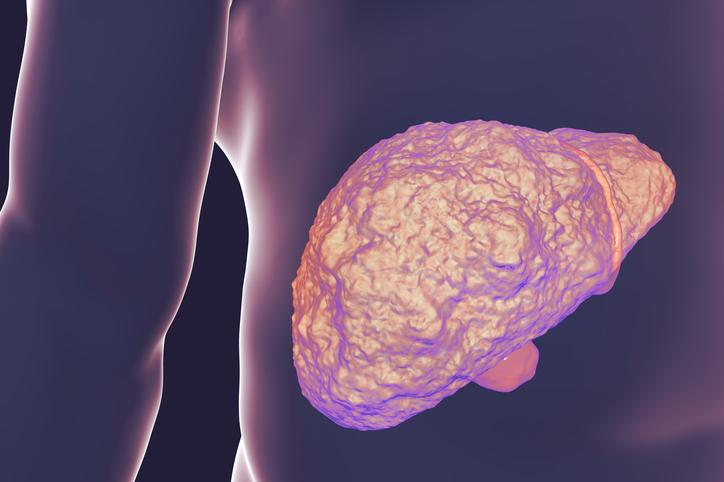
Home test offers earlier diagnoses for liver disease patients
“One of the unmet needs for this condition is that we don’t have many tools, to screen for this condition at home,” said UW Medicine's Dr. Philip Vutien.
A new handheld device that patients can use at home could help reveal certain liver diseases earlier, according to a study recently published in the American Journal of Gastroenterology.
The device, about 10 inches tall, looks like a small tubular table lamp and sends a flickering light beam into the patient’s eye. The flickering starts at a speed too fast to detect, such that the light appears unwavering. Over the course of a couple of minutes, the flickering gradually slows, and when the patient perceives that the light starts to flicker, they push a button on a related phone app.
A healthy person will be able to tell that a light is flickering sooner than someone with liver disease, said the study's co-lead author. Dr. Philip Vutien, an assistant professor of gastroenterology at the University of Washington School of Medicine.
Patients with cirrhosis are at risk for hepatic encephalopathy, a condition in which the liver fails to clear toxins from the bloodstream, causing mental fogginess to develop. This liver "confusion" can be life-threatening and require a hospital stay to address, Vutien added.
“One of the challenges and one of the unmet needs for this condition is that we don’t do a very good job, or have many tools, to screen for this condition at home,” he said. Instead, patients are screened for this condition when they come to see us in clinic, he said.
The purpose of the new technology, called Beacon, is for current patients to be able to screen themselves at home for hepatic encephalopathy and receive earlier intervention and care, rather than wait until a doctor's appointment is available in a clinic.In other words, Vutien said, it's another tool for doctors and providers to monitor the health of their patients at home.
This new technology can sit innocuously on a table or counter. A screening with the Beacon smartphone app involves eight repetitions of recognizing the light's flickering. The resulting data, which are on par with that generated by larger clinical devices, are forwarded electronically and securely to the person's primary care provider for analysis, said Richard Li, Ph.D. student in the Paul G. Allen School of Computer Science & Engineering at the University of Washington. Li was a co-author of the study.
Vutien and Li hope to the screening device will have value not only for detecting liver illness but also, prospectively, to help reveal conditions such as dementia and diseases that affect the optic nerve, they said.
The Beacon device itself is not available now, but it could be available in a year or so, Li suggested. A next step is to conduct a large trial that evaluates the use of at-home testing with Beacon and how at-home measurements can help guide the management of hepatic encephalopathy.
Patients were recruited for the study from hepatology clinics at UW Medicine between January 2019 and December 2021. Among the 153 study participants, 108 had cirrhosis and 45 had chronic liver disease without cirrhosis. Dr. George Ioannou of UW Medicine and the Veteran Affairs Puget Sound Healthcare system, and James Fogarty of the Paul. G. Allen School of Computer Science & Engineering served as co-principal investigators for the study.
Download broadcast-ready soundbites and a demonstration of the flickering detection device.
This study was funded in part by the National Institutes of Health/NIDDK (R21DK117431) and by NIH/NLM (R01LM012810).
Written by Barbara Clements, bac60@uw.edu, 253-740-5043
For details about UW Medicine, please visit https://uwmedicine.org/about.